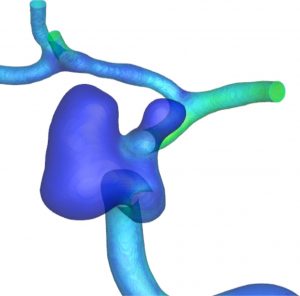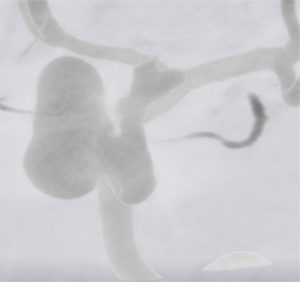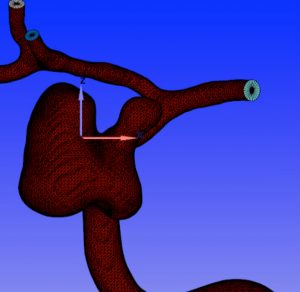CFD simulation of hemodynamics in patients pre and post-initiation of unilateral cerebral aneurysm.
Five percent of adults are affected by brain aneurysms; one ruptures every 18 minutes. Forty percent of ruptures are fatal, while 2/3 of survivors suffer permanent neurologic injury. For this reason an understanding of their cause is imperative. Although there is a lot of research focuses on the prevention of rupture once an aneurysm has formed, there is little known about their initiation. We hypothesise that flow characteristics could have a significant impact in this initiation and we are therefore using computational fluid dynamics to simulate the fluid flow in patients with a unilateral aneurysm. By using medical images taken from such patients alongside digital tools, we are able to model the flow in the pre-aneurysm state and isolate flow properties which could be leading to their cause. Further to this computational work, we are experimentally testing these hypotheses using cutting edge 3D bioprinting and PIV techniques alongside our expertise in cell culturing. The project is therefore multidisciplinary, involving a range of experts from high performance computational simulation to molecular biology, in a collaborative effort involving researchers from all over the world.

CFD simulations are undertaken on these patient-specific computational meshes in order to elucidate the potential flow-related causes of aneurysm, in this case specifically in the vasculature of the brain.

Typical raw data from an angiogram taken of a patient with a unilateral aneurysm. The blood vessels and aneurysm are more highly resolved than the surrounding tissue and bone in this type of imaging.

Raw outputs from medical imaging are processed into surface meshes through image segmentation. This removes all unwanted features and noise from the data and results in a clean geometry ready for simulation.